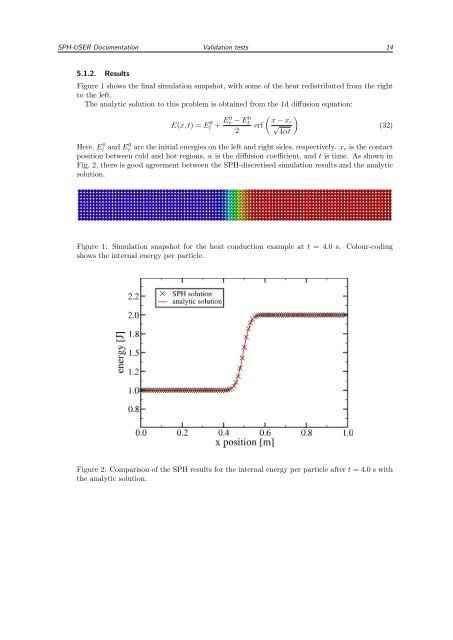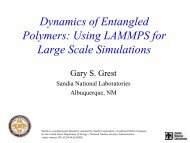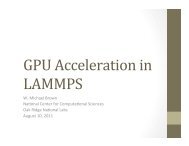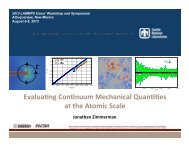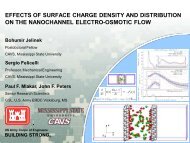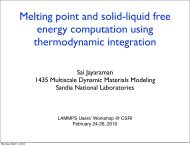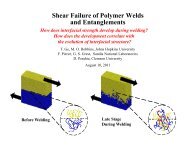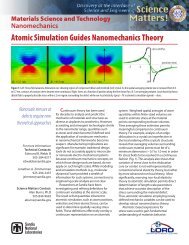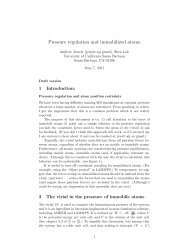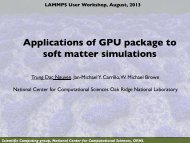this user's guide - Lammps
this user's guide - Lammps
this user's guide - Lammps
Create successful ePaper yourself
Turn your PDF publications into a flip-book with our unique Google optimized e-Paper software.
SPH-USER Documentation Validation tests 14<br />
5.1.2. Results<br />
Figure 1 shows the final simulation snapshot, with some of the heat redistributed from the right<br />
to the left.<br />
The analytic solution to <strong>this</strong> problem is obtained from the 1d diffusion equation:<br />
E(x, t) = E 0 l + E0 r − E 0 l<br />
2<br />
erf<br />
( ) x − xc<br />
√<br />
4αt<br />
Here, El<br />
0 and Er 0 are the initial energies on the left and right sides, respectively. x c is the contact<br />
position between cold and hot regions, α is the diffusion coefficient, and t is time. As shown in<br />
Fig. 2, there is good agreement between the SPH-discretised simulation results and the analytic<br />
solution.<br />
(32)<br />
Figure 1: Simulation snapshot for the heat conduction example at t = 4.0 s. Colour-coding<br />
shows the internal energy per particle.<br />
Figure 2: Comparison of the SPH results for the internal energy per particle after t = 4.0 s with<br />
the analytic solution.


